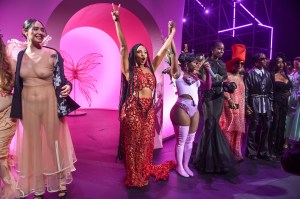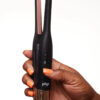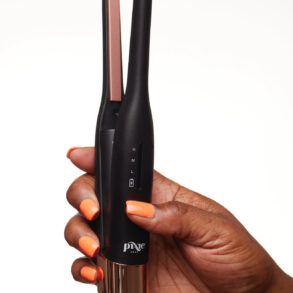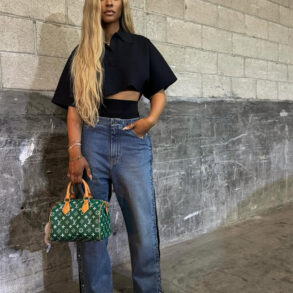When chief executive officers come to Wall Street to pitch their companies, they usually come with one of two stories.
In one, they’re the conquering hero on top of the hill and protecting their turf. In the other, they’re more of a successful upstart, ready to win the fight for market share on their way up the hill.
Martin Waters, chief executive officer of Victoria’s Secret & Co., managed to borrow a bit from each narrative at the company’s annual investor meeting on Thursday.
On one side, he pointed to Victoria’s Secret’s $6.2 billion in sales, its $700 million in earnings before interest, taxes, depreciation and amortization and its leading 20 percent share of the U.S. market for lingerie.
“With 85 million followers on Instagram, we’re the second-most followed brand on the planet,” Waters crowed.
But at the same time, Victoria’s Secret is very much trading like an underdog and struggling through weakness in its home market. Its market capitalization is just $1.2 billion — a fraction of its sales — and the company’s enterprise value is only 3.3-times EBITDA. The stock is down by about 50 percent over the past year.
If some on Wall Street have already written off the company, that has liberated Waters, who was ceaselessly optimistic at the meeting, but also addressed the weaknesses head on.
“The harsh reality is that the most important aspect of the work that we had to do in 2023, which was strengthening the core of the company — our sales for Victoria’s Secret and Pink in North America are not where we need them to be,” the CEO admitted.
He pointed to the successful launch of the Victoria’s Secret’s loyalty program, which garnered 18 million followers in just a few months, and some good product launches as among the company’s successes.
“But in the end [they were] not enough to carry the day,” Waters said. “And so the challenge is operating in a market that’s been shrinking [with a] mid single-digit decline in the intimates market.
“The reality of operating in a consumer environment where sales are going backward for most people, where the customer has less money, where the customer is skewing to a lower value item, have all been very challenging,” he said.
Sales at the company’s stores fell 15.6 percent to $1.6 billion in the first half.
It’s been a tough stretch for Victoria’s Secret, which after defining sexy in a very specific way for so long, fell out of step with the broader culture — and then ran into a pandemic, an aborted sale and then a corporate spinoff.

Goyo and Doechii at Victoria’s Secret’s party to celebrate its new fashion show, reimagined in video format as “The Tour.”
Steve Eichner/WWD
But the brand has reset and is working again to project its message out to the world, bringing its famous fashion show out of hiatus last month in New York with a new message, meant to be much more empowering to women.
And Waters said the effort is working.
The idea was to create a “media frenzy” and get “the whole world talking about Victoria’s Secret again” while also being relevant in popular culture and creating videos and other assets that can be used to promote the brand.
The CEO said the show succeeded on all fronts, creating 17 billion media impressions since early September.
“There is a relevance to this brand,” he said. “We’re back in the conversation about popular culture.”
Now the idea is to stay there — in a good way this time — and rebuild the business.
That has the company pushing ahead in several different areas at once, expanding overseas, building the business with Amazon to north of $100 million over the next year, using technology from the Adore Me acquisition to juice up the main brand, combining more Pink and Victoria’s Secret stores into just one location in the mall and redeveloping categories that prior management abandoned.
Greg Unis, brand president of Victoria’s Secret and Pink, noted, “When we exited the swim business…we actually didn’t lose the customer. She stayed with us, but what we did lose is the trip that she made to buy swim and apparel and the spend on core…every $2 of swim that she bought that we lost, we also lost a dollar of core. That’s a big deal.”
Likewise on sports bras.
“We lost this market,” Unis said. “We had it. We were at one point in time, we had a 16 percent share in sports bras. Today, it’s 4 [percent]. It was about a half a billion dollar business at its peak. It’s not that today. Huge opportunity.”
On apparel, he noted: “In the U.S. market, our addressable market, women shop for lingerie three times a year versus apparel, they shop for 21 times a year. That’s a big difference. So the shift from 3 to 21, I like that math.”
Now Victoria’s Secret just needs to make that math work for it.
This post was originally published on this site be sure to check out more of their content.








